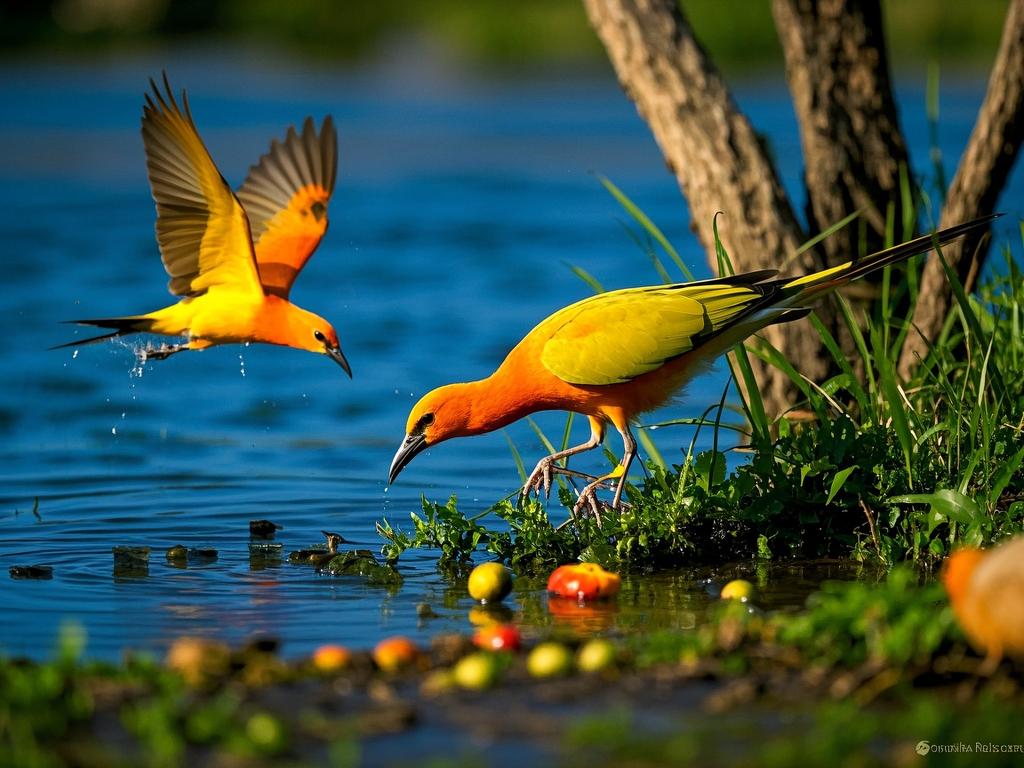
The Diverse Wetlands of Australia: A Haven for Wildlife in Peril
Australia's wetlands are a wonderland of biodiversity, a tapestry woven with countless species and intricate ecological systems. These watery realms, from the vast billabongs of the Outback to the lush mangroves along the coast, are not just pretty landscapes; they are the lifeblood of the continent's unique wildlife.
Let's start with the sheer numbers. Australia is home to over 600 wetland-dependent species. That's a mind-boggling figure! Just think about it. These include the iconic saltwater crocodiles that rule the northern wetlands, their massive jaws a symbol of raw power. And then there are the delicate waterbirds like the Australasian bittern, a master of camouflage, lurking in the reeds like a ghost from another world.
The history of Australia's wetlands is as rich as it is long. Aboriginal Australians have a deep spiritual and cultural connection to these areas. For them, the wetlands were not just places to hunt and gather but sacred grounds. Dreamtime stories tell of how the land was formed by ancestral beings, and the wetlands were often the sites of creation and transformation.
Fast forward to the present, and these wetlands are in serious trouble. One of the major threats is climate change. Rising sea levels are encroaching on coastal wetlands, drowning the mangroves that provide crucial habitat and protection. In some areas, sea levels have risen by up to 10 centimeters in the past century, and the rate is accelerating. That's like a slow but relentless invasion, pushing the wildlife out of their homes.
Drought is another villain. Australia has been experiencing more frequent and severe droughts in recent years. The lack of water has dried up many inland wetlands, turning once-thriving oases into dust bowls. According to recent studies, up to 40% of Australia's wetlands have been affected by drought in the past decade. It's a silent catastrophe, as the water-dependent plants and animals wither away.
Then there's the issue of human development. Urban sprawl, agriculture, and industrial activities are all taking their toll. Wetlands are being drained for housing, farms are expanding into wetland areas, and pollution from factories and mines is contaminating the water. It's like we're in a race against time, and the wetlands are losing.
Take the Murray-Darling Basin, one of Australia's most important wetland systems. It supplies water to millions of people and supports a vast array of wildlife. But over-extraction for irrigation has led to a significant decline in water levels. The once-mighty Murray River, which runs through the basin, has seen its flow reduced by up to 60% in some stretches. This has had a domino effect on the entire ecosystem, from the fish that rely on the river for spawning to the birds that feed on the aquatic insects.
We need to act now. It's not too late, but we're running out of time. One solution could be to invest in wetland restoration projects. By restoring damaged wetlands, we can create a haven for wildlife to bounce back. For example, in some areas, we could reintroduce native plants that have been lost, which would not only provide food and shelter for the animals but also help to stabilize the soil and improve water quality.
Another important step is to better manage water resources. We need to find a balance between meeting human needs and protecting the wetlands. This could involve more efficient irrigation techniques, recycling water, and setting limits on water extraction.
Let's also not forget the power of public awareness. We need to educate people about the importance of wetlands and the threats they face. If we can get more people on board, we can create a groundswell of support for conservation.
Australia's wetlands are at a crossroads. They are either going to become a relic of the past, a sad reminder of what we've lost, or we can turn the tide and make them thrive once again. It's up to us. Will we be the generation that saves these precious wetlands, or will we be the ones responsible for their demise? The choice is ours, and the clock is ticking. So, let's roll up our sleeves and get to work before it's too late. Because when the wetlands go, a large part of Australia's unique wildlife will go with them, and that's a future we don't want to imagine.

